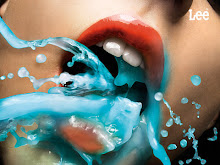 The first artwork shown is from a series called “Something More” by Tracey Moffatt. The composition was commissioned by the Albury Regional Art Gallery in 1989 and is one of Tracey Moffatt’s most distinguished art works. Through this series, Moffatt became one of Australia’s most famous modern artists. “Something More” is a photographic series. It was shot in the Link Studios in Wodonga, Victoria near the gallery where it would hang. For the photo-narrative of “Something More” Tracey had backdrops and sets built to look similar to a film set. Tracey Moffatt describes herself as being an amateur when it comes to photography. She prefers to direct the photo shoots, while photographic technicians actually take the photos. In this series Moffatt opted to be in front of the camera as the main character, as in many of her other photographic art series.
The first artwork shown is from a series called “Something More” by Tracey Moffatt. The composition was commissioned by the Albury Regional Art Gallery in 1989 and is one of Tracey Moffatt’s most distinguished art works. Through this series, Moffatt became one of Australia’s most famous modern artists. “Something More” is a photographic series. It was shot in the Link Studios in Wodonga, Victoria near the gallery where it would hang. For the photo-narrative of “Something More” Tracey had backdrops and sets built to look similar to a film set. Tracey Moffatt describes herself as being an amateur when it comes to photography. She prefers to direct the photo shoots, while photographic technicians actually take the photos. In this series Moffatt opted to be in front of the camera as the main character, as in many of her other photographic art series.
The following artwork is a piece by Rosalie Gascoigne. This sculptural piece was first released into the public in 1993, labeled “White City”. Gascoigne is known for her use of found and natural materials. She would salvage objects from her rural outback Australian home, through tips and paddocks. None of the objects she used were new, as she wanted the materials to have a sense of past. Rosalie was known for being a hoarder, creating pieces though looking and experimenting with the vast material range she would surround herself with in her studio, house and garden. Gascoigne uses found objects to create her signature grid-like sculptural pieces. “White City” was a development of a jigsaw style grid with intricately arranged rectangles in a range of sizes. Rosalie Gascoigne contrasts the used objects found in the rural environment by creating her art with help from ‘machine age’ technology such as electrical saws. However, she creates an imperfect look in her grids by skewing shapes through subtle hand-made cuts.

No comments:
Post a Comment